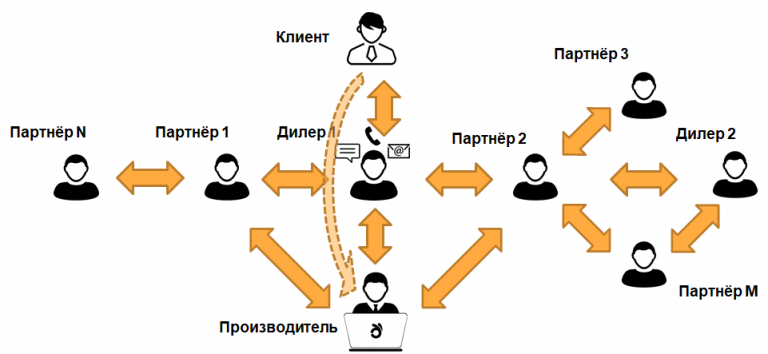Digest of sci-fi news for the week, about which we did not write anything
Created reprogrammable smart fabric that responds to electricity and temperature

New “smart” material, developed by researchers at the University of Waterloo, is activated by both heat and electricity, making it the first material in history to respond to two different stimuli.
The unique design paves the way for a wide range of potential uses, including clothing that keeps you warm as you walk from your car to the office in winter, and car bumpers that bounce back to their original shape after a crash.
Inexpensive, made from polymer nanocomposite fibers from recycled plastic, the programmable fabric can change its color and shape when exposed to stimuli.
Astronomers find exoplanet using machine learning
University of Georgia Research Group confirmed the presence of a previously unknown planet outside our solar system, and they used machine learning tools to detect it.
A recent study by the group has shown that machine learning can correctly determine the presence of an exoplanet by studying protoplanetary disks, accumulations of gas around newly formed stars.
The recently published results are the first step towards using machine learning to identify previously unseen exoplanets. Computer models were able to detect a signal in data that humans were already analyzing; they found something that had previously gone unnoticed.
A new AI has been developed that more accurately determines cancer from images

Doctors, scientists and researchers have created an artificial intelligence model that can accurately detect cancer, which they say can speed up the diagnosis of the disease and speed up the treatment of patients.
Cancer is one of the leading causes of death worldwide. According to the World Health Organization, about 10 million people die from it every year, or almost one in six. However, in many cases, the disease can be cured if it is detected at an early stage and treated promptly.
An artificial intelligence tool developed by experts from the Royal Marsden NHS Foundation Trust, the Institute for Cancer Research London and Imperial College London can determine whether abnormal growths found on CT scans are cancerous.
According to the study, the algorithm works more efficiently and effectively than existing methods. Research results published in eBioMedicine of the Lancet.
An active Sun may have started life on Earth

The first building blocks of life on Earth may have been formed by eruptions from our Sun, according to new study.
A series of chemical experiments show how solar particles colliding with gases in Earth’s early atmosphere can form amino acids and carboxylic acids, the basic building blocks of proteins and organic life. The results of the research were published in the journal Life.
To understand the origin of life, many scientists are trying to explain how amino acids, the raw materials from which proteins and all cellular life are formed, were formed. The most famous proposal came in the late 1800s, when scientists speculated that life could have originated in a “little warm pond”: A soup of chemicals charged with lightning, heat, and other energy sources that could mix in concentrated amounts to form organic molecules .
However, ceteris paribus, solar particles appear to be a more efficient source of energy than lightning. Scientists surmise that lightning was just as common during the “warm little pond” era as it is today. But lightning, which originates from thunderclouds formed by rising warm air, would be rarer in a 30% dimmer Sun.
Scientists may have found a connection between photosynthesis and the fifth state of matter

Scientists observe in the laboratory a strange state of matter that occurs when atoms are cooled to almost absolute zero. And outside the window, the trees collect sunlight and turn it into new leaves and branches.
The two seem to be unrelated, but a new study from the University of Chicago shows that the two are not as different as they might seem at first glance.
Studypublished April 28 in the journal PRX Energy, found an atomic-level connection between photosynthesis and exciton condensates – a strange physical state that allows energy to flow without friction through a material. According to the authors of the study, it is intriguing from a scientific point of view and may offer new ways to design electronics.
Astronomers have found distant clouds of gas with the remains of the first stars
Using ESO’s Very Large Telescope (VLT), researchers for the first time discovered characteristic signs left by the explosion of the first stars in the universe. They found three distant gas clouds whose chemistry matches what we would expect from the first stellar explosions. These data bring us one step closer to understanding the nature of the first stars formed after the Big Bang.
“For the first time in history, we were able to identify the chemical signatures of the explosions of the first stars in very distant gas clouds,” says Andrea Saccardi, a graduate student at the Paris Observatory – PSL, who led the research during his master’s thesis at the University of Florence.
Researchers believe that the first stars to form in the universe were very different from the ones we see today. When they appeared 13.5 billion years ago, they contained only hydrogen and helium, the simplest chemical elements in nature. These stars, which were tens or hundreds of times more massive than our Sun, quickly died in powerful explosions known as supernovae, enriching the surrounding gas with heavier elements for the first time. From this enriched gas, successive generations of stars were born, which in turn ejected heavier elements as they also died. But the very first stars have long since disappeared, so how can researchers learn more about them?
“Primitive stars can be studied indirectly by detecting the chemical elements that they dissipated into the environment after they died,” says Stefania Salvadori, an assistant professor at the University of Florence and co-author of the study, published today in the Astrophysical Journal.





